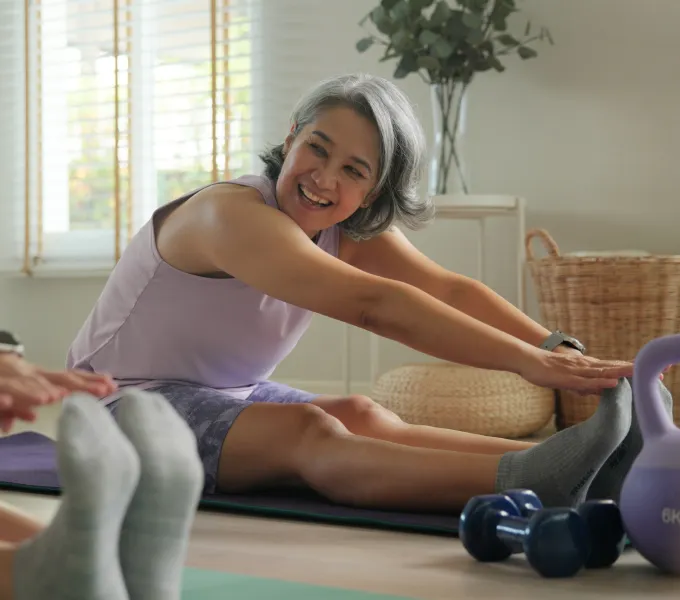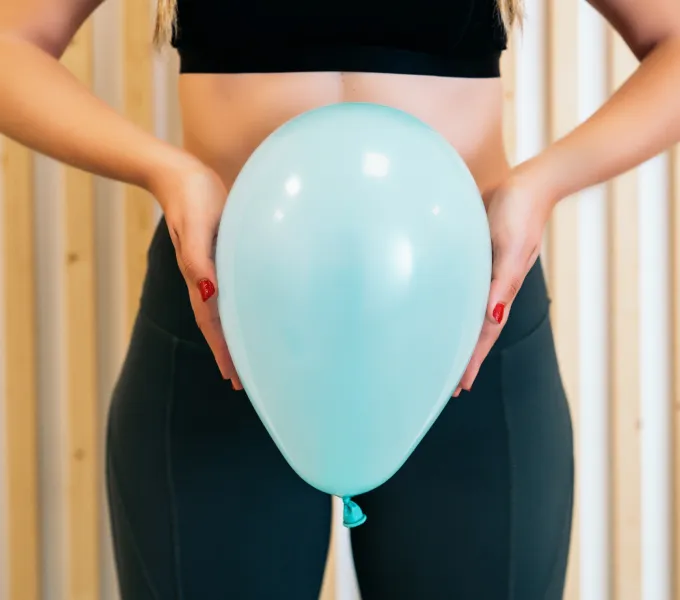
How to use vaginal weights for a stronger pelvic floor
So you ordered some vaginal weights, congratulations! You are on your way to a stronger pelvic floor.
As pelvic floor physical therapists, we recommend the usage of vaginal weights frequently to help our patients with strengthening their pelvic floor muscles and improving proprioception (awareness of their pelvic floor muscles).
Who are vaginal weights good for?
If you are experiencing any of the following conditions, vaginal weights could be a helpful part of your treatment plan:
- Urinary or fecal incontinence
- Pelvic organ prolapse
- Postpartum challenges after a vaginal or c-section birth
- Weak pelvic floor muscles
How do you safely use vaginal weights without discomfort?
- Wash your hands well with soap and water.
- Use the lightest weight if it is your first time trying vaginal weights.
- Clean our vaginal weights. We suggest reading the cleaning instructions that came with your vaginal weight set so you don’t accidentally damage them.
- Use a generous amount of water-based lubricant on the weight.
- Insert the weight into your vagina, like you would a tampon. You can do this standing with one leg up on a chair or reclined on your bed with your knees bent. Do not try to insert the weight while sitting on the toilet, in case you drop it.
- Once the weight is in, put your clothes back on.
- Test your pelvic floor strength by seeing if you can keep the weight in if you sit upright or stand. If the weight starts to fall out when you stand up, follow instructions for seated exercises below. If the weight starts to fall out when you’re sitting, follow instructions for supine exercises (exercises laying on your back) below. If you are able to stand up without it falling out, go do some easy household chores (like washing dishes, doing laundry, taking a shower, etc.) for 10-15 minutes.
After you’re done with your 10-15 minutes of exercise (in supine, seated, or standing), undress and carefully take the weight out. Wash it immediately as per the instructions and put away.
How often should you be using your vaginal weights?
Your pelvic floor muscles are just like any other muscle group. You need to challenge them consistently in order to see results. But also like your other muscles, they can get tired and sore with a new training routine.
We recommend you start vaginal weight training 2-3x per week for 10-15 minutes, then gradually work your way up to using them daily.
Seated vaginal weight exercises
If you tried to stand up with the weight in and it was falling out, try this until you get a little stronger!
- Get comfy on the couch, bed, or chair, but make sure you’re sitting with good posture.
- Watch TV, read a book, or do some knitting for 10-15 minutes in your seated position.
- If you feel the weight starting to fall out, try activating your pelvic floor muscles (do a kegel) to try to lift the weight back up into the vaginal canal.
- After you’re done with your 10-15 minutes, you may undress and carefully take the weight out.
- Wash it immediately as per the instructions and put away.
Supine vaginal weight exercises
If you tried standing and sitting with the weight in and it was falling out, try this until you get a little bit stronger!
- Lay on a yoga mat or towel on the floor with your knees bent and feet on the floor.
- Practice activating your pelvic floor muscles (i.e., doing kegels) to see if you can feel the weight moving up towards your head when you contract the muscles and the weight moving slightly down away from your head when you relax the muscles.
- You can also try holding the pelvic floor muscle contraction for 5-10 seconds at a time to work on endurance.
- See if you can do these exercises for 10-15 minutes or until your muscles are fatigued.
- After you’re done with your 10-15 minutes, you may undress and carefully take the weight out.
- Wash it immediately as per the instructions and put away.
How pelvic floor physical therapy can help
While this is helpful information, it may not be enough to see results. Ideally, finding and working with a team of healthcare providers, including a physical therapist specializing in treating the pelvic floor, is the best way to begin treating your condition.
A pelvic floor physical therapist can work with you as a part of your healthcare team by assessing your muscle function, performing manual therapy to help reduce your symptoms, assigning exercises to help maintain your progress, and guiding you through the vaginal training process to help you achieve your goals!
Find a pelvic floor physical therapist near you or book a visit with one of our trained pelvic floor specialists today.




